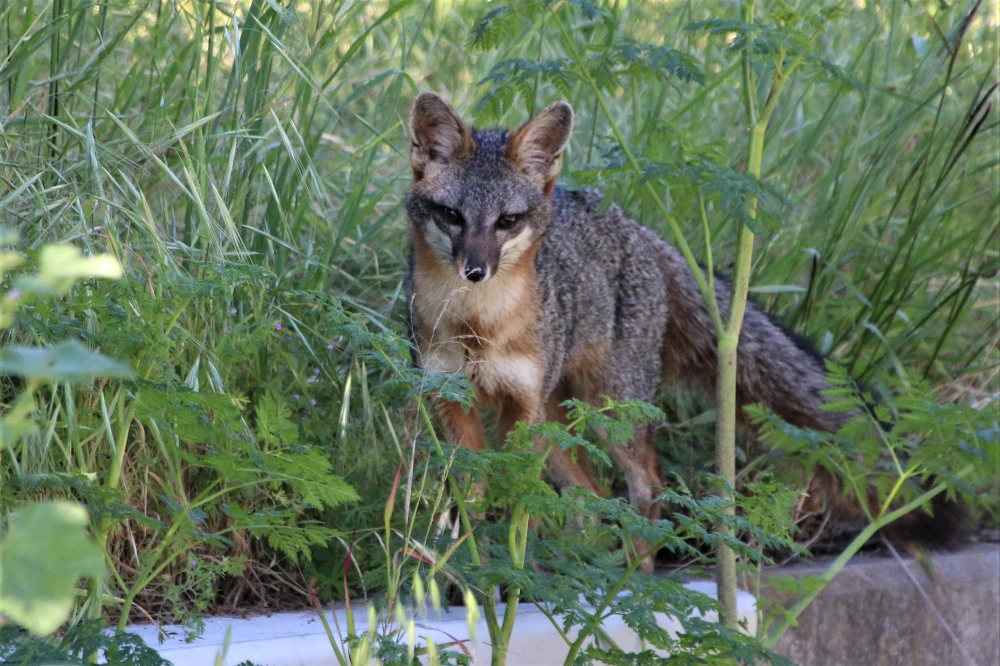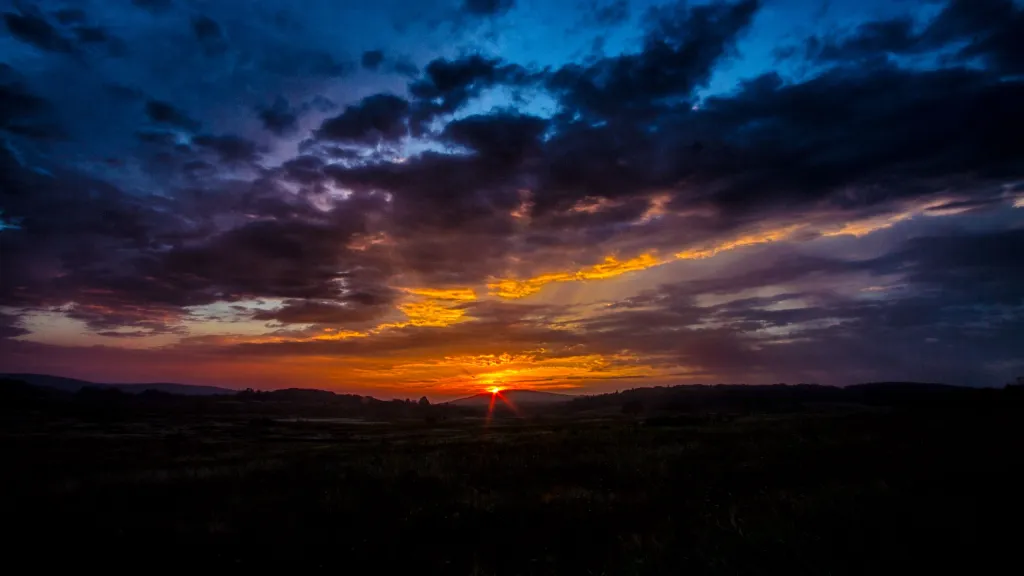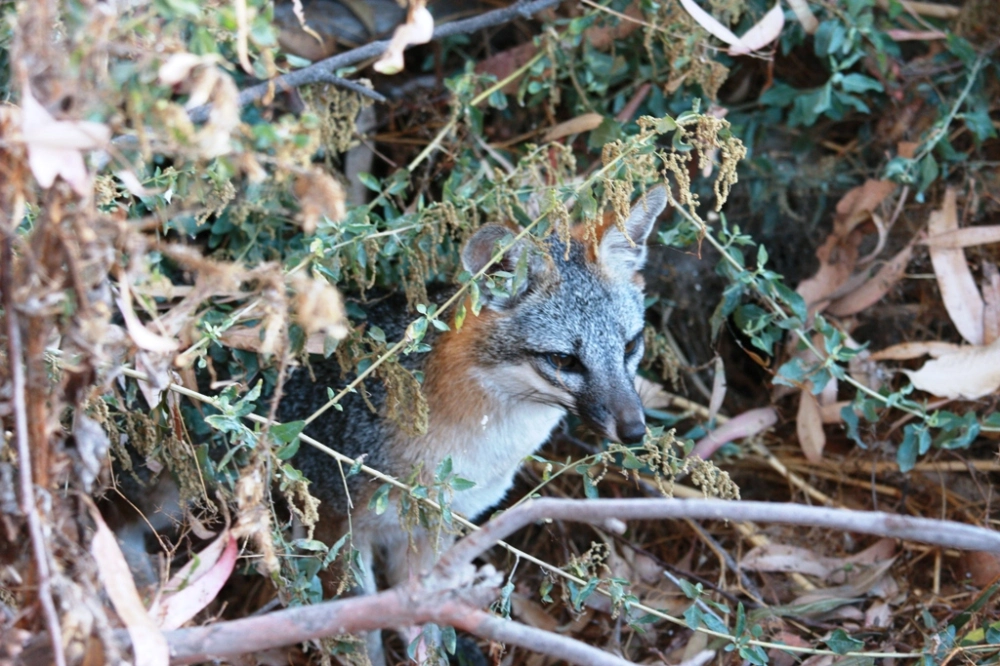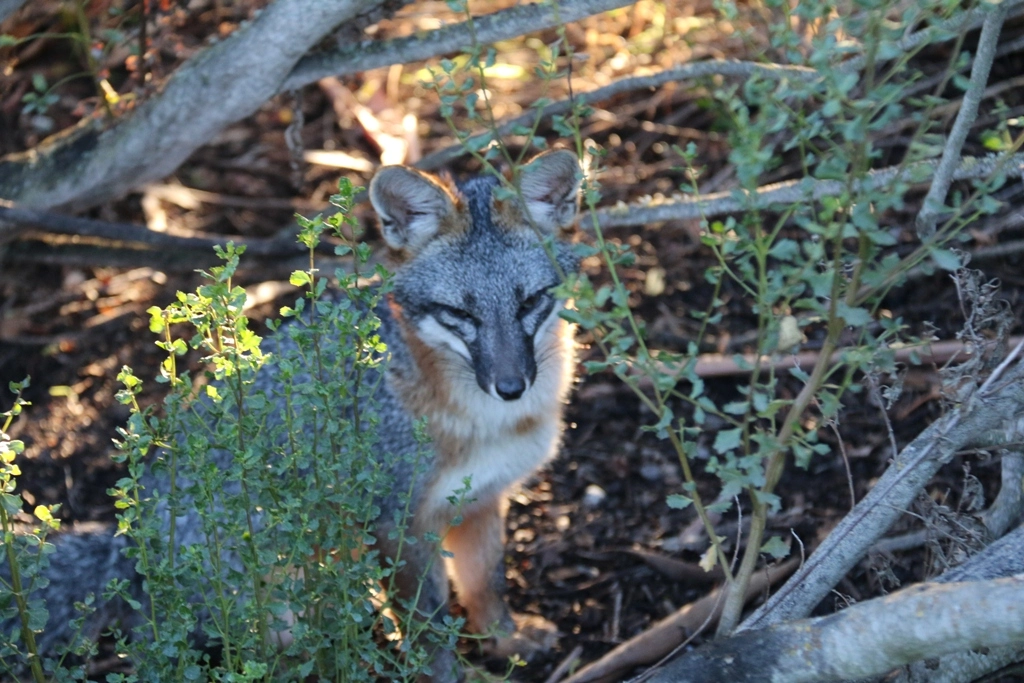How Gray Foxes Use Time
by William C. Leikam
President, CEO & Co-founder, Urban Wildlife Research Project

For many years now I’ve been up in the morning long before dawn and I’m in the field as dawn draws a thin line of light along the ridgeline of the Diablo Mountain Range in Central California. For me, that light signals the birth of a new day. That line of light in the east for the gray fox reminds them that the time of the hunt is closing. If by then the fox still feels that emptiness inside, it knows that it has but a short while to fill that empty place before he goes to sleep with or without a full belly. The urgency of the hunt increases as dawn light increases and the number of prey decrease.

As dawn lights up the early morning and ground fog settles in out over the salt marsh, I can shut off my headlight and see my surroundings in some detail. After years of feeling this pre-sunrise time of day, as dawn grows toward sunrise, I feel the day aging. It’s that time of our morning, the gray fox’s night, when the nocturnal wildlife like opossums have come in from off their hunting fields and begin to settle down. However, gray foxes are not strictly speaking nocturnal. They have daylight time in the morning and in the evening. We call this behavior crepuscular. Because of that, Laimos and his mate Big Eyes often have another couple of hours to enjoy the daylight and if necessary to continue the hunt for a meal. However, most of their prey are nocturnal and so the daytime pickings are scarce. The male gray fox Laimos likes to sleep and before sunrise he tends to yawn. He’s almost ready to get back into the thicket, go to his first sleeping niche and spend those sun-filled daylight hours napping. (Gray foxes have several places where they nap like cats during our day.)

As I write this on Monday, August 30, 2021, the sun rose this morning at 6:37 AM and it will set at 7:40 PM giving us a daylight total of 13 hours, three minutes. Night is 10 hours 57 minutes. The latter time is the general amount of time that they will use to acquire food. If we look at the year-long picture, gray foxes like Laimos and Big Eyes use the light/dark/long/short cycles of the seasons in much the same way as they do on a nightly basis. Instead of hours, that pattern becomes for instance, short winter days and long winter nights. Those nights give these predators a long period of night/dark to capture a woodrat, a baby opossum, to capture their illusive prey.
Moving then across the seasons as our daylight gets longer and the dark nights shorter, the predators gradually have less time to find that chubby woodrat, or that jack rabbit. So, they must pay attention for they are bound by the shifting long/short cycles of the seasons, and the light/dark cycles of the day. These are the drivers behind their sense of time.
Gray Foxes General Health
These two foxes appear to be in good health.
Total Numbers of Gray Foxes in the Palo Alto Baylands Nature Preserve
As of August, 2021, we have two adult gray foxes living in the Palo Alto Baylands Nature Preserve.
Section II
Update for the Urban Wildlife Research Project
Check out our Facebook page.
BE SURE TO check out our YouTube Channel for some incredible wildlife videos at https://www.youtube.com/channel/UC5ujc7p8dU1-O5AbPAWz2_Q
Check out Bill’s interview of January 1, 2021, hosted by the Town of Woodside California for their First Friday event at https://youtu.be/QrZzvmrqKTA
Undoubtedly the best Radio interview – KALW (Local PBS) Audio Recording Interviewed by Sofie Kodner during December 2020 – Broadcast 1/11/2021 5:00 PM on PBS’s program Crosscurrents https://www.kalw.org/post/bay-area-wildlife-habitats-are-disappearing-fox-guy-has-plan
Bill had a conversation with John Muir Laws and Marcia Sivek during a drawing workshop featuring the gray fox with the renowned artist John Muir Laws on January 14, 2021. It aired from noon until 1:30 PM. The Gray Fox: Art and Conservation • John Muir Laws
You can access Bill’s PowerPoint presentation Corridors & Connections: Sustaining the Health of All Wildlife presented during the October 24th P-22 Urban Wildlife Festival here: https://www.youtube.com/watch?v=Dh4MQL1D1Cc
NEW – To find out more about us, search Urban Wildlife Research Project, UWRP, gray foxes, wildlife connection, linkages, corridors and several documentaries including the video clips
If you haven’t had a chance to read some of the articles that have been written about our study of gray fox behavior and our corridor work, click on these links as they will take you to the source: Bill Leikam – The Fox Guy, and Greg Kerekes & URWP
Section III
Gray Fox, Baylands Goals
Within the permit that allows the Urban Wildlife Research Project to conduct its study of the behavior of the gray fox at the Palo Alto Baylands Nature Preserve, the objectives covered area:
- Monitoring of urban gray fox Denning sites in Palo Alto Baylands.
This is being accomplished during the period when the gray foxes use a den site. It is one of the prime locations for gathering most of the behavioral data of the litter and for adults alike.
- Assessment of status and population trends of Baylands urban gray foxes
Since January 2019 a pair of resident gray foxes have claimed territory at the Palo Alto Baylands Nature Preserve.
- Identification of habitat features that promote the presence of urban gray foxes
After considering this and talking with people who know how to restore habitats, we need to assess what kinds of plants, including the Alkaline Salt Bush, would grow best along the edge of the saltwater channel and alongside the marsh. We need to grow a permanent habitat that contains the corridors and plant it as soon as possible. We’ll keep an eye on this as this is a critical link between the southern region of the Baylands and the northern region.
- Assessment of reproductive success and identification of factors that promote successful reproduction
Open up the pinch-point along Matadero Creek by developing thickets that link one area to another, instead of the present “islands”.
- Identification and assessment of possible dispersal travel routes.
Presently there can only be guesses as to dispersal travel routes. We intend to make this important question much more concrete when we attain our collaring/take/capture permit from the Department of Fish & Wildlife.




